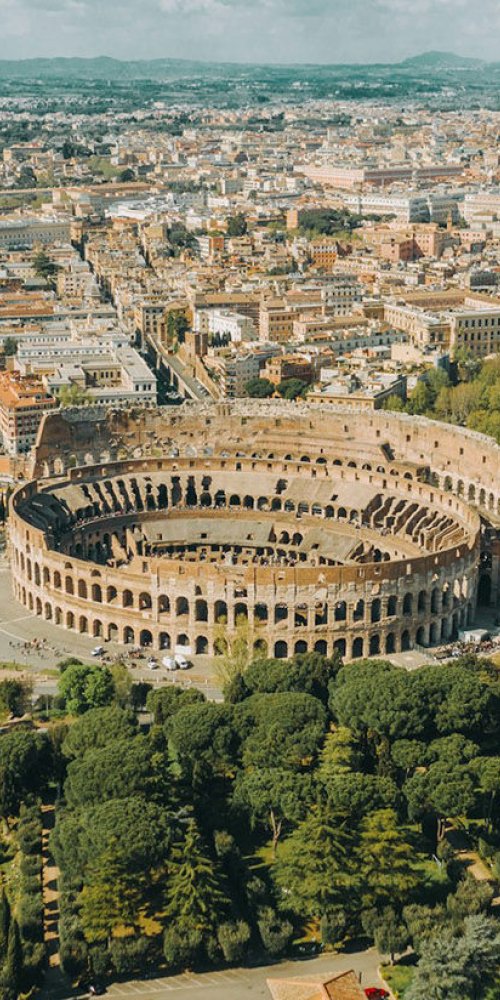

Step off the cobbled streets and hear it right away: the sharp beep of ticket barriers syncing at metro stations mingles with the melodic clang of tram bells weaving through piazzas. Around you, snippets of conversations ripple in Italian, English, Spanish, German, French and Russian - a real Babel of travellers and locals alike. The warm, timeless scent of freshly brewed espresso drifts past a queue waiting to board the 40 tram, while scooters and bicycles zip by on lanes etched into centuries-old streets. That’s Rome’s public transport rhythm, a daily dance that carries millions through history, neighbourhoods, and secrets yet to be discovered. Whether you’re rushing to the Colosseum at dawn or lingering over gelato near the Tiber at twilight, knowing your transport options will unlock the true pulse of this eternal city.

Exploring Rome by public transport is not just a practical choice - it’s a savvy one. While the city’s enchanting streets can be tempting for leisurely strolls, fast, reliable transit saves you precious sightseeing hours and spares your feet. With notoriously narrow streets, limited parking and heavy traffic congestion, driving yourself quickly becomes stressful and costly. Instead, hopping on the metro Rome, IT offers a swift underground pulse cutting through urban chaos with trains every few minutes.
Moreover, public transport is an eco-friendly way to tread lightly in one of the world’s most visited cities. Rome’s expanding network is embracing green tech, reducing emissions and easing air quality - plus many buses and trams are low-floor and electric. When I first climbed the cathedral tower near Termini, I was glad I’d left my car at the hotel and took the metro instead. It kept my itinerary nimble, and the green benefits? That’s a bonus for future Romans and visitors alike. Plus, tickets and transport passes Rome, IT offer excellent value, with many day and multi-day options designed to suit every itinerary and budget.
| Mode | Lines | Peak Frequency | Night Service |
|---|---|---|---|
| Metro | 3 (A, B, C) | Every 3–6 mins | No, limited night buses |
| Tram | 6 | Every 8–15 mins | Limited lines 3, 8 |
| Bus | 350+ | Every 6–20 mins | Extensive night routes |
| Ferry | Tiber seasonal lines | Varies | No |
| Bike-Share | 500+ stations | N/A | 24/7 |
Rome’s public transport in Rome, IT wraps together a dense metro core and widespread buses and trams reaching beyond the historic centre. Metro lines A and B cross busy hubs like Termini and the Vatican area, while tram routes serve charming neighbourhoods like Trastevere and Testaccio. Night buses fill in service gaps when trains stop, perfect for late diners or theatre-goers. When you plan your day, consider which combination suits your rhythm best.
Rome’s rush hours hit mainly between 7–10am and 5–8pm weekdays, with packed metros and bustling bus stops. When you travel during those hours, expect standing-room-only on Line A near Termini and slow-moving traffic affecting buses and trams.
Off-peak offers a more relaxed experience - fewer crowds, easier photo ops, and room to breathe, especially midday or late evenings. Trams, in particular, shine during quieter hours, gliding unhurried through historic quarters.
For those with flexible itineraries, shifting your day around peak times can make all the difference in comfort. Plus, some transport passes Rome, IT don’t differentiate pricing by time, so unlimited passes become even better value.
When night falls, remember metro trains pause service, but buses and some trams continue to ferry night owls safely - perfect if you’re dining late near Trastevere or the lively Campo de’ Fiori.

Rome’s metro Line C is the most wheelchair-accessible with elevators at every station, while recent upgrades on Lines A and B are improving access incrementally. Most modern buses and trams have low floors and ramps, but always double-check station facilities or ask staff for assistance.
Strollers can board buses and trams easily, though some older metro stations don’t have lifts. Avoid rush hours to ensure space. Elevators and escalators help in larger hubs like Termini.
Large luggage is manageable on metro trains but can be tricky on crowded buses or trams. Taxi or airport shuttle buses may be more comfortable with sizeable bags after your flight.
Yes, the BIT ticket grants 100 minutes of multimodal travel including buses, trams, and metro within Rome’s urban transport network.
Simply tap your contactless bank card or smartphone on the validator at entry or boarding to pay the standard fare; a daily cap limits your spending automatically (ACTL, 2025).
Definitely. The Roma 24H and 72H passes offer great flexibility and value when you plan to explore intensively in a few days.
While the metro closes at midnight, night buses cover many routes and areas. Always stay aware and opt for well-lit stations and stops.
With trusty knowledge of metro Rome, IT, tram routes Rome, IT, and how to buy bus tickets Rome, IT, you’re set to uncover the city’s layers like a seasoned insider. Don’t hesitate to share your experiences or ask questions below; sign up for our newsletter to keep receiving handy transit tips for Rome and beyond. Your adventure awaits - so jump on, validate that ticket and enjoy everything Rome has in store!

Additional articles from our network with useful insights about Rome.